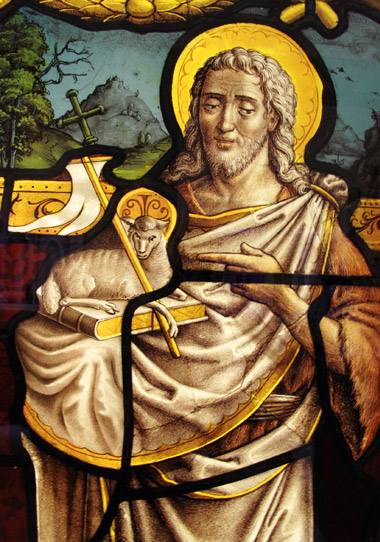The views expressed in our content reflect individual perspectives and do not represent the authoritative views of the Baha'i Faith.
Observe, how those in whose midst the Satan of self had for years sown the seeds of malice and hate became so fused and blended through their allegiance to this wondrous and transcendent Revelation that it seemed as if they had sprung from the same loins. Such is the binding force of the Word of God, which uniteth the hearts of them that have renounced all else but Him, who have believed in His signs…
This is the significance of the well-known words: “The wolf and the lamb shall feed together.” [Isaiah 65:25] Behold the ignorance and folly of those who, like the nations of old, are still expecting to witness the time when these beasts will feed together in one pasture! Such is their low estate. . . . Besides, of what profit would it be to the world were such a thing to take place? – Baha’u’llah, The Book of Certitude, pp. 112–113.
The wolf and the lamb get along famously in the well-known Biblical prophecy of Isaiah:
The wolf also shall dwell with the lamb, and the leopard shall lie down with the kid; and the calf and the young lion and the fatling together; and a little child shall lead them. – Isaiah 11:6.
How do the Baha’i writings interpret this prophecy? Remember our four-step model:
Step 1: If impossible, then not literal.
Why is the literal reading not possible here?
Step 2: If not literal, then figurative.
What is the comparison or analogy expressed here?
Step 3: If figurative, then symbolic.
What qualities does this symbol represent?
Step 4: If symbolic, then spiritual and social.
Who (or what) represents those qualities?

First, a brief word of advice: most prophecies describe spiritual events, not physical ones. Spiritual events involve people, individually and collectively. Whenever you encounter an animal in prophecy, the animal itself symbolizes the animal’s nature. For instance, if the prophecy mentions a lamb, it generally refers to the peaceful, docile nature of the lamb. (In some instances in the New Testament, when “lamb” is capitalized as “Lamb,” that is a clear reference to Jesus Christ.)
RELATED: Who Is Christ to Baha’is?
Now take the “wolf” as another example. Beast, or person? Or a person who is beast-like in nature?
Here, the prophecy refers to the wolfish nature. In other words, people with vicious, predatory and otherwise aggressive characteristics can easily be described as wolf-like in nature.
Now let’s apply the four steps to this prophecy. Remember that the first step in interpreting prophecy rules out a literal reading by demonstrating its impossibility.
RELATED: What’s the Difference Between a Christian and a Baha’i?
Step 1: In the opening quote above, Baha’u’llah uses an appeal to absurdity to exclude a literal interpretation of a related verse in Isaiah 65:25:
The wolf and the lamb shall feed together, and the lion shall eat straw like the bullock: and dust shall be the serpent’s meat. They shall not hurt nor destroy in all my holy mountain, saith the Lord.
Baha’u’llah takes the literal interpretation to task:
Behold the ignorance and folly of those who, like the nations of old, are still expecting to witness the time when these beasts will feed together in one pasture! Such is their low estate… Besides, of what profit would it be to the world were such a thing to take place? – The Book of Certitude, p. 112.
The answer is obvious: Not only is it impossible to imagine a vegetarian wolf eating alongside a lamb, or to imagine a lion eating straw, it would be of no benefit whatsoever.
Elsewhere, Abdu’l-Baha discusses Isaiah 11:1–9 in a chapter of Some Answered Questions. If the prophecies in Isaiah 11:1–9, are “taken literally,” Abdu’l-Baha says, then these very prophecies “failed absolutely and entirely to take place in the days of Christ.” – p. 63.
Step 2: Having now ruled out a literal interpretation of Isaiah 11:1–9, Abdu’l-Baha affirms that these prophecies must be interpreted figuratively. Just as a literal interpretation can be dismissed if it makes no real sense, a figurative interpretation must be reasonable, as well. Not all figurative interpretation is correct.
Step 3: Key attributes represented by the “wolf” and “lamb” are hostile and peaceful nations (including Christian nations), who continue to frustrate and delay the complete fulfillment of this prophecy.
We know that early Christianity brought together Christians from otherwise “hostile peoples” in peaceful fellowship as fellow Christians.
Step 4: By excluding the literal (Step 1), by establishing the figurative (Step 2), and by explaining the symbolic (Step 3) nature of this passage by showing the partial fulfillment of Isaiah 11:1–9 in early Christianity, Abdu’l-Baha completes the interpretation by demonstrating the apparent spiritual and social fulfillment (Step 4) of Isaiah’s prophecy that symbolically took place due to the influence of Baha’u’llah:
But these verses apply word for word to Baha’u’llah… Strong and weak, rich and poor, contending kindreds and hostile nations—which are like the wolf and the lamb, the leopard and kid, the lion and the calf—will treat one another with the utmost love, unity, justice, and equity…
Consider likewise that in the short span of time since the advent of Baha’u’llah, people of all nations, kindreds, and races have entered beneath the shadow of this Cause. Christians, Jews, Zoroastrians, Hindus, Buddhists, and Persians all consort together with perfect love and fellowship… This is one of the meanings of the fellowship between the wolf and the lamb, the leopard and the kid, and the lion and the calf. – Some Answered Questions, newly revised edition, pp. 73-74.
















Comments
Sign in or create an account
Continue with Googleor